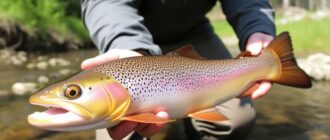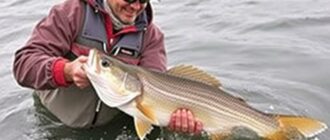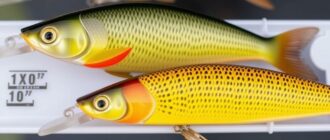If you’ve ever stood on a riverbank at dawn, felt a tug on the line, and watched a silver shape wheel in the early light, you know how thrilling fishing can be. The practice of catch and release marries that thrill with conservation: you experience the fight and connection with nature while aiming to return the fish unharmed to live another day. But doing catch and release well is a skill and an ethic. In this long, friendly guide, we’ll walk through everything you need to know to practice catch and release responsibly, from simple gear choices to species-specific handling, recovery techniques, and the moral reasoning behind it.
Why Catch and Release Matters
Catch and release is more than a fishing technique. It’s an ethical decision that recognizes the value of individual fish lives and the long-term health of fisheries. Anglers who practice catch and release often do so to conserve breeding populations, protect rare or threatened species, and ensure that future generations can enjoy quality fishing experiences. It’s both practical and principled: by returning fish to the water, you preserve ecological balance and help sustain recreational fisheries.
However, catch and release can be more complicated than simply tossing a fish back. Fish are biological organisms with stress responses, and how we handle them matters. Done improperly, catch and release can result in delayed mortality, injury, or population impacts that counteract conservation goals. That’s why learning correct handling techniques, thoughtful gear selection, and the reasoning behind each step matters. We’ll cover the science where it’s helpful, but mostly we’ll focus on practical, humane steps you can use immediately on the water.
The ethical case: Respecting life and ecosystems
Respect for living creatures is a common starting point. For many anglers, catching a fish is about an encounter rather than a take. When you practice catch and release ethically, you acknowledge the intrinsic value of the fish and the ecosystem. That respect also extends to habitats, other wildlife, and fellow anglers. Ethical angling includes obeying rules, minimizing harm, and sharing knowledge to raise standards across the community.
Another ethical angle is stewardship. Recreational fishing contributes to economies and communities, and anglers can be powerful stewards of waterways. Catch and release, when done right, helps maintain robust fish populations, supports native biodiversity, and reduces the impact of fishing pressure on sensitive stocks.
How Fish Physiology Affects Survival
To understand why some handling techniques matter, it helps to know a little about fish physiology. Fish breathe by passing water over gills where oxygen is extracted. When a fish is pulled out of water, its gills stop functioning normally, and oxygen uptake ceases. The stress of being hooked and fought generates biochemical changes: lactic acid buildup in muscles, oxygen debt, and alterations in blood chemistry. These physiological responses can make a fish vulnerable, even after it swims away seemingly fine.
Temperature plays a huge role. Warm water holds less dissolved oxygen and raises a fish’s metabolic rate, increasing the speed at which it uses oxygen during a fight. That means a long fight in warm water dramatically increases the chance of delayed mortality. In cold water, fish can be more resilient in some ways, but they can also be more easily injured by handling because tissues are less flexible at low temperatures.
Immediate threats: air exposure, physical injury, and exhaustion
There are three crucial, immediate threats to recently caught fish:
- Air exposure: Time out of the water stresses fish and can damage gill tissues. Short is always better.
- Physical injury: Improper landing, handling with dry or abrasive surfaces, and using improper tools can damage scales, slime coats, or gills.
- Exhaustion: A long fight depletes oxygen and energy reserves; the fish may need time and support to recover before release.
Minimizing these threats is the core of ethical catch and release.
Gear Choices That Make Catch and Release Safer
Good gear choices set you up for success. Thoughtful selection reduces the time a fish spends on the line and the chance of harmful injuries. Here are the main things to consider before you even cast.
Rods, reels, and tackle: fight time matters
Use tackle that allows you to land fish quickly. That doesn’t mean using the heaviest gear possible for every fish; rather, choose gear suited to the species and size you target so you can control the fight without being overly brutal. Lighter tackle can be fun, but it often prolongs the fight, increasing exhaustion and risk. Conversely, using gear that’s too heavy can cause severe hooking injuries. Aim for balance.
Hooks: barbed or barbless, circle vs J-hooks
Hooks are a central piece of the practice. Barbless hooks are widely recommended for catch and release because they remove more easily and minimize tissue damage when pulled out. Many anglers remove barbs at home with pliers, or buy hooks manufactured without barbs. Circle hooks are particularly useful when fishing with bait: they tend to set in the corner of the mouth when the angler allows the fish to take the bait and sets the hook by reeling in steadily rather than jerking. That reduces gut hooking and increases survival rates.
Nets, mats, and grips
Using a net can greatly reduce the stress of landing a fish—when used correctly. A soft, knotless rubber or silicone net is the best choice because it protects the fish’s slime coat and reduces scale loss. Landing mats are helpful if you’re unhooking fish onshore and want to avoid scraping them on stones or mud, but always keep the mat wet and limit time out of water. Lip grips and forceps can be useful tools for some species and situations, but they can cause injury if misused, so learn proper technique before relying on them.
Accessories: dehookers, pliers, and measuring tools
Carry the right tools within easy reach. Long-nose pliers and hook cutters let you remove hooks quickly or shorten broken points, minimizing injury during removal. A dehooker or hook extractor is invaluable for deep-hooked fish; a pair of hemostats helps to clamp and back out hooks. A soft measuring tape or a bump board allows quick measurement without prolonged handling. Having these tools organized and ready reduces handling time and stress on the fish.
Landing the Fish: Techniques to Reduce Harm
The moment a fish comes near the boat or bank, your actions determine survival odds. Smooth, calm, and efficient movements matter. The goal is to get the fish into a position where you can remove the hook and release it without injuring it further or leaving it out of water too long.
Play the fish smart, not hard
Keep steady pressure and avoid prolonged fights. Use the rod’s drag and backbone rather than your arms to tire the fish, and steer it toward you without forcing it into shallow or rocky areas that can cause body or tail damage. Lower the rod tip to reduce the angle and fatigue for the fish, allowing you to land it sooner.
Using the net properly
When using a net, submerge the net before scooping up the fish and lead the fish into it head-first whenever possible. Don’t lift the fish out of the water while it’s in the net—if you must do so, support it carefully and get the fish back into the water quickly. Avoid dragging a net across jagged rocks or into vegetation where the fish could be impaled or scratched.
Handling on the bank or in a boat
If you’re on the bank, crouch low and keep the fish near the water. Use wet hands or a wet cloth to support the fish if you need to lift it briefly. In a boat, avoid laying fish on dry surfaces. Use a wet towel or a rubberized mat if you have to set the fish down. Remember that the less time a fish spends out of water, the better its chance of survival.
How to Remove Hooks Safely
Hook removal is an art. The right method depends on how the fish is hooked. The most common situations are mouth-hooked, lip-hooked, deep-hooked (throat or gut), and throat-hooked. Your response should prioritize the fish’s chance of survival over the rescue of the hook itself.
Removing a mouth or lip hook
For hooks in the corner of the mouth, pry the jaw open gently and back the hook out the way it came in. Use long-nose pliers or hemostats to get a firm grip on the hook and keep the fish in the water as much as possible. With barbless hooks this is quick and often painless for the fish.
Dealing with swallowed or deep hooks
If a fish is deeply hooked in the throat or gut, the safest course for the fish is often to cut the line as close to the hook as possible and release the fish with the hook still embedded. Many swallowed hooks will rust and fall out over time or be worked out by the fish’s movements; trying to remove a deeply embedded hook can cause more damage and reduce survival. If you have the tools and expertise and can remove a deep hook quickly without gill or internal tissue damage, you may do so, but proceed with extreme caution.
Use of dehookers and long-nose pliers
Dehookers and long-nose pliers allow you to reach deeper without putting your hands inside a fish’s mouth or gill cavity. Practice on inanimate objects or participate in a clinic to gain confidence. These tools minimize contact with the fish’s body and speed up the process, both of which increase survival chances.
Handling Tips: Hands, Slime, and Support
Proper handling protects the fish’s slime coat, scales, and organs. The slime coat is the first defense against infections and parasites, so keeping it intact matters.
Wet hands are better hands
Always wet your hands before touching a fish. Dry hands rub off that protective slime and tear scales. A simple rule: if you can touch a fish, make sure your hands are wet and clean. Avoid sunscreen-smelling or sticky hands when possible; the oils and chemicals can damage the fish’s protective layer.
Support the body
For larger fish, support the belly with one hand while cradling the tail with the other. Never hold a fish by the eyes, gill plates, or jaw alone unless it is safe and appropriate for the species—some fish are delicate or have spines and may be injured or may injure you. Small fish can often be handled gently with two wet fingers beneath the belly, but avoid pinching or squeezing.
Minimize touch and exposure
Handle the fish as little as possible. Avoid lifting it high above the water for photos; instead, keep the fish near the surface and take quick photos if needed. Plan your photo before lifting the fish so the moment is brief. A simple rule of thumb: if it takes longer than 10–15 seconds to take a photo, don’t lift the fish out of water; either forego the photo or use a quick-release method like taking a single shot while supporting the fish in the water.
Photographing Fish Ethically
Everyone likes a nice photograph of a memorable catch, but keeping the fish safe should come first. Take quick, low-angle photos and keep the fish supported in the water when possible. Use a hookless pose and avoid “trophy” holds that stretch the fish. If you want a full-length photo, hold the fish horizontally and support the belly; never dangle a fish vertically by the jaw if it’s big enough to damage internal organs.
Consider alternatives to lifting: clipping a quick photo while the fish is partly submerged or using a waterproof camera or phone can reduce stress. Many anglers also use a quick-release plate on the boat and a clean, wet towel that’s prepared before the fish is landed to minimize time out of water.
Photo checklist
- Have camera ready and settings configured before you land the fish.
- Wet your hands and any towel or mat beforehand.
- Keep the fish horizontal and supported; avoid vertical dangles for larger fish.
- Limit out-of-water time to under 10–15 seconds whenever possible.
- Release the fish gently back into the water and, if needed, revive it before letting it swim away.
Revival Techniques: Helping Fish Recover
Sometimes a fish needs a little help regaining its strength before it can swim away. Revival is especially important for exhausted or heavily fought fish, fish caught in warm water, or species known to recover slowly. The central goal of revival is to oxygenate the fish and move water across its gills until it can maintain an upright position and swim away on its own.
Simple revival method
Hold the fish gently in the water, facing upstream if you are in a current or facing into the breeze in still water, so water passes through the gills. Rock the fish slowly back and forth to facilitate water flow. For larger fish, support the belly while allowing the tail to move. When the fish begins to show steady, strong tail beats and can maintain position in the water, release it gently and allow it to swim away on its own.
Using a revive box or livewell
On boats, some anglers use a revive box or livewell with circulated, oxygenated water. While these systems can be effective, they must be maintained and cleaned to avoid contaminating fish with pathogens. The water should be clean, cool, and flowing, and fish should spend as little time as necessary inside. Overcrowding or poor water quality can do more harm than good.
Signs the fish is ready to go
Look for regular gill movement, upright posture, and active tail beats. A fish that swims weakly or floats immediately upon release may still be in trouble—revive it longer. Never assume a fish is fine simply because it swims initially; watch for a short distance after release if possible.
Species-Specific Considerations
Not all species are the same. Some fish are especially resilient, while others are fragile. Being aware of common target species’ vulnerabilities will help you tailor your handling.
Trout and salmon
Cold-water species like trout and salmon are generally sensitive to handling and warm temperatures. Keep fights short, handle with wet hands or a rubber net, and minimize air exposure. In warm water, consider releasing trout quickly and minimizing effort when fish are holding in slow, warm pools where oxygen is low.
Bass and panfish
Warm-water species like largemouth bass and many sunfish are often hardy, but they still benefit from careful handling. Use a soft net, remove hooks quickly, and avoid squeezing. Bass that are deeply hooked in the throat or gills may have a reduced survival chance; in such cases, cutting the line is often the best option.
Saltwater species
Saltwater fish can have different challenges: barotrauma when brought up from depth, and vigorous anaerobic metabolism during fights. Barotrauma can prevent fish from re-submerging due to expanded swim bladders; descending devices or venting may be necessary in some jurisdictions. Fish captured on deep reefs or at great depths often do poorly with simple release unless appropriate devices are used to recompress them.
Pelagic species and sharks
Large pelagic fish and sharks pose practical challenges. If you’re practicing catch and release with big fish, use heavy gear to shorten the fight (within legal and ethical bounds), keep the fish in the water while unhooking if possible, and use proper tools to avoid hooking yourself. When dealing with sharks and rays, be aware of rotational spines and the best practices for safely handling both the fish and the angler.
Dealing with Deep Hooking and Gut Hooks
Deep hooking is the angler’s worst scenario for catch and release. A hook lodged in a vital area like the throat, gills, or stomach creates a high risk of mortality if removed improperly. The common and ethical approach for deep hooks is to cut the line and leave the hook in place, rather than inflicting extra damage trying to remove it.
Why cropping the line can be better
Leaving a hook reduces handling time and tissue trauma. Many hooks are made of materials that corrode over time, and the tissue around the hook often heals. Attempting to remove a deeply embedded hook can lacerate internal organs and gill arches, causing fatal injury. The general rule: if you can see the hook and it’s in the mouth or lip, remove it quickly. If it’s deep, cut the line as close as possible to the hook and let the fish go.
When to consider killing the fish
There are exceptions. If the species is invasive or if local rules require retention of certain fish, or if the fish is so badly injured that recovery is unlikely and the law allows humane dispatch, killing and using the fish may be appropriate. Ethical anglers should avoid suffering. If dispatching, use quick, humane methods approved in your area, not slow or brutal ones.
Water Temperature and Seasonal Considerations
Water temperature strongly influences a fish’s ability to recover. In warm summer months, many species struggle in low oxygen conditions, and even the best handling may not be enough. Fisheries managers often advise against catch and release during heat waves or in extremely warm waters. Similarly, during spawning periods or times when fish are particularly vulnerable, reducing catch and release can prevent undue harm.
Cold-weather handling
In cold weather, fish metabolism is slower, and while some species tolerate cool water better, they can be fragile if exposed to handling that causes tissue damage. Ice-cold air can also be harmful; avoid lifting fish out into freezing conditions for photos. Consider quick release with minimal exposure during winter months.
Spawning season and fish stress
During spawning, fish are often compromised, focused on reproduction, and may be more susceptible to stress. Some fisheries close during spawning runs to protect fish during this critical period. If fishing in spawning season, consider catch-and-release avoidance for certain species or reduce pressure by targeting other areas or species.
Legal and Regulatory Considerations
Catch and release doesn’t override the law. Many jurisdictions set limits on size, seasons, gear types, and methods. Familiarizing yourself with local regulations is both legal compliance and a form of ethical angling. Rules often exist for good reason: to protect stocks, ensure sustainable harvest, or avoid harm to spawning fish.
Some rules require specific handling methods, barbless hooks in certain waters, or mandatory retention of invasive species. Others impose strict size limits where releasing a fish that’s smaller than legal or larger than legal could create more harm than good in the long run if those sizes are important to population structure. Always check local rules and follow them conscientiously.
Permits and reporting
Many areas require licenses and, in some cases, reporting of catches. Reporting contributes to science and management, improving the sustainability of fisheries. If you participate in citizen science programs—such as tagging or catch reporting—learn and follow the protocols to minimize harm to the fish and maximize data quality.
Special Cases: Invasive Species and Harvest Decisions
Catch and release is generally about conservation of native or valued populations, but not all fish benefit a watershed. Some species are invasive and damaging to ecosystems. In those cases, anglers are often encouraged or required to remove the fish rather than release it. Examples include certain carp species in some regions or lionfish in tropical Atlantic waters.
If you catch an invasive species, follow local guidelines: keep and humanely dispatch if allowed, record the catch for management agencies, and avoid transporting the fish to other waters. Do not release invasive species back into the environment where they can cause harm.
Hygiene and Disease Prevention
Anglers can inadvertently spread pathogens and invasive organisms between water bodies. Simple hygiene helps protect fish health and habitats. Rinse nets and gear between uses in different lakes or streams, dry gear thoroughly, and clean boats and waders before moving between waters. Some organizations recommend disinfecting equipment after contact with fish, especially in areas with known disease outbreaks.
Avoiding spread of invasive species
Thoroughly clean and dry gear between water bodies, drain live wells, and dispose of bait and unwanted fish properly. Don’t transport fish to stock other waters unless authorized. Preventing the spread of organisms like zebra mussels or whirling disease is a shared responsibility among anglers.
Common Myths and Misconceptions
Out on the water you’ll hear many claims: “A fish will be fine if it swims away,” “You can tell by the color,” or “Some species don’t feel pain.” It’s important to separate myth from evidence-based practice.
Myth: Fish always recover if they swim away
Swimming away is a positive sign, but not a guarantee. Fish can die later due to internal damage, infections, or exhaustion. That’s why monitoring the fish briefly after release and using revival techniques when needed improves survival odds.
Myth: Hands are harmless; you can grab fish by the gills
Grabbing by the gills can damage delicate tissues and impair breathing. Avoid touching gills whenever possible. Use gentle support under the body and wet hands to preserve the slime coat and reduce injuries.
Myth: Barbed hooks are always better
Barbed hooks can improve hook-hold but increase handling harm and make removal more damaging. Barbless hooks reduce injury and facilitate quicker release without much effect on catch rates for many species. In competitive catch-and-release fisheries, barbless hooks are widely used.
Education, Outreach, and Community Standards

Ethical angling grows through community norms and education. Share best practices with new anglers and encourage clubs, retailers, and guides to promote humane handling. Many fisheries organizations host clinics and produce guides that teach techniques like knot-tying for barbless hooks, proper handling, and safe dispatch methods.
When advising others, model calm, competent behavior. Peer pressure can be a force for good: when respected anglers practice and recommend ethical catch and release, standards rise. At the same time, approach disagreements respectfully—some fishers may be new or come from different traditions. Offer to demonstrate techniques rather than scolding.
Practical Checklists and Quick Guides
Here are easy-to-use checklists to keep in your vest, on your phone, or taped to your tackle box. These condensed reminders help make good behavior automatic on the water.
Pre-fishing checklist
- Confirm local rules, seasons, and size limits.
- Pack barbless hooks or pliers to crimp barbs.
- Bring soft, knotless rubber net and wet towel.
- Organize pliers, dehooker, line cutters, and measuring board for quick access.
- Prepare camera and know settings to avoid delays.
- Check water temperature and avoid high-risk times if possible.
When you hook a fish
- Keep the fight short; avoid jumping around shallow snags.
- Use rod and reel drag to control the fish—avoid exhausting it.
- Lead the fish into the net head-first and submerge the net before scooping.
- Wet hands and handle gently; keep fish low and supported.
- If deeply hooked, cut the line as close to the hook as possible.
- Revive fish facing into current or moving water until it can swim strongly.
Tables: Tools, Hook Types, and Best Practices
Below are a couple of useful tables summarizing gear, hook types, and recommended actions for common situations. Use them as quick references.
| Item | Purpose | Best Practice |
|---|---|---|
| Barbless Hooks | Reduce tissue damage and speed removal | Use widely for catch and release; crimp barbs off standard hooks if needed |
| Circle Hooks | Reduce gut hooks, especially with bait | Let the fish take the bait and reel steady; avoid striking sharply |
| Soft Rubber Net | Protects slime coat and scales | Use for landing and holding fish; avoid dragging across rocks |
| Long-nose Pliers / Hemostats | Hook removal and cutting | Keep accessible; use to remove hooks quickly or cut line |
| Dehooker / Hook Extractor | Remove deep hooks with less handling | Use only if you are trained; cut line if removal would be injurious |
| Revive Box / Livewell | Re-oxygenate exhausted fish | Use clean, cool water; avoid overcrowding; minimize time inside |
| Hook Location | Recommended Action | Survival Outlook |
|---|---|---|
| Corner of mouth | Remove quickly with wet hands/pliers | High |
| Lip or jaw | Use pliers; support fish; quick release | High |
| Gills | Cut line close to hook and release | Moderate to low |
| Throat or stomach | Cut line as close as possible to hook; release | Lower; depends on species and injury |
| Deep gut (internal) | Cut line; leave hook; consider humane dispatch if heavily injured | Low |
Top 10 Catch-and-Release Tips
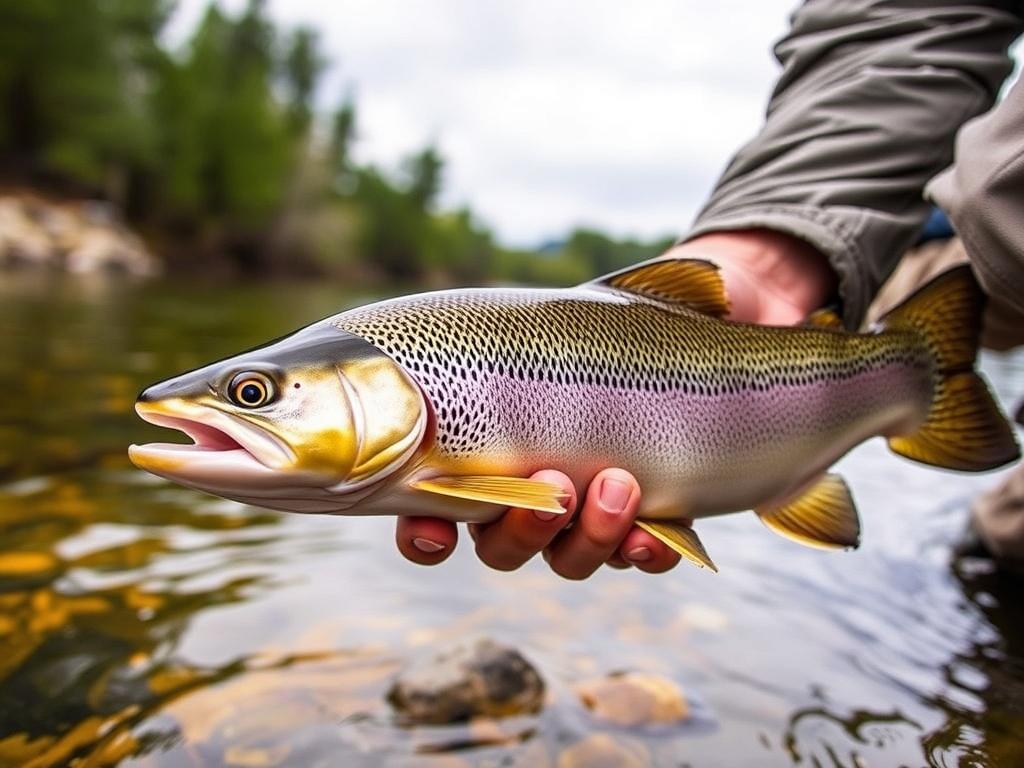
Here’s a quick, memorable list to keep in your head:
- Use appropriate tackle to shorten fight times.
- Prefer barbless or crimped-barb hooks and consider circle hooks for bait fishing.
- Wet your hands and minimize handling time—keep the fish in the water whenever possible.
- Use a soft, knotless net and land fish head-first into the net.
- If a fish is deeply hooked, cut the line close and leave the hook in.
- Photograph fish quickly and at water level if possible; avoid vertical dangles.
- Revive weakened fish by holding them facing current until they recover.
- Avoid catch and release in very warm water or during spawning unless guidelines permit it.
- Clean and dry gear between water bodies to prevent disease and invasive spread.
- Learn and follow local regulations and species-specific recommendations.
Common Questions and Practical Answers
Q: How long can a fish be safely out of water?
A: Short is always better. A common recommendation is under 10–15 seconds for a quick photo and handling. For some delicate species or in warm conditions, even shorter times are advisable. If you need more time to remove a hook, hold the fish in the water while working or cut the line if removal would take too long.
Q: Are barbless hooks less likely to lose fish?
A: Barbless hooks may allow a slightly higher rate of lost fish during the fight, but many anglers find the difference insignificant for most species. The benefit of easier and less damaging removal generally outweighs the small difference. Many tournaments and fisheries encourage barbless hooks for these reasons.
Q: What about fish that look fine after release but die later?
A: Delayed mortality happens due to internal injuries, infections, or exhaustion. Proper handling reduces the risk, but it can’t eliminate it. That’s why minimizing fight time, reducing air exposure, avoiding deep hooking, and reviving fish are essential steps to reduce delayed mortality.
Q: Should I still release a fish with a bleeding wound?
A: Minor bleeding from the mouth that stops quickly often does not compromise survival. However, heavy bleeding from gills or significant injury reduces survival odds. If the fish is badly injured and the law allows, humane dispatch and use of the fish may be the kinder option than releasing a suffering animal.
Case Studies and Real-life Scenarios
Let’s walk through two real-world scenarios to see how the principles above apply in practice. These examples will help translate theory into action.
Scenario 1: Trout in a warm tailwater
You’re fishing for trout below a dam on a hot July afternoon. The trout are active but water temperatures are higher than usual. You hook a 14” trout on a dry fly. The fight is short because you’re using appropriate gear. You net the fish with a soft landing net, keep it submerged facing into the flow, wet your hands, and remove a shallow hook from the corner of its mouth with pliers. You photograph it briefly while supporting it in the water, then revive it by holding it facing upstream until it can hold its position and swim strongly off. This approach minimizes mortality risk despite warm conditions.
Scenario 2: Deep-hooked bass in shallow water
You’re bass fishing from a kayak and catch a big largemouth that takes a soft plastic bait. On landing, you discover the hook is buried in the throat. You cannot remove it without risking severe damage. Following best practice, you cut the line as close to the hook as possible, avoid excessive handling, and release the fish. Although survival chance is reduced, this method prevents further trauma that would likely have resulted from gutting it out. In some contexts, you might be required or advised to humanely dispatch if the fish is badly injured; check local policies.
Monitoring and Citizen Science: How Anglers Help Fisheries
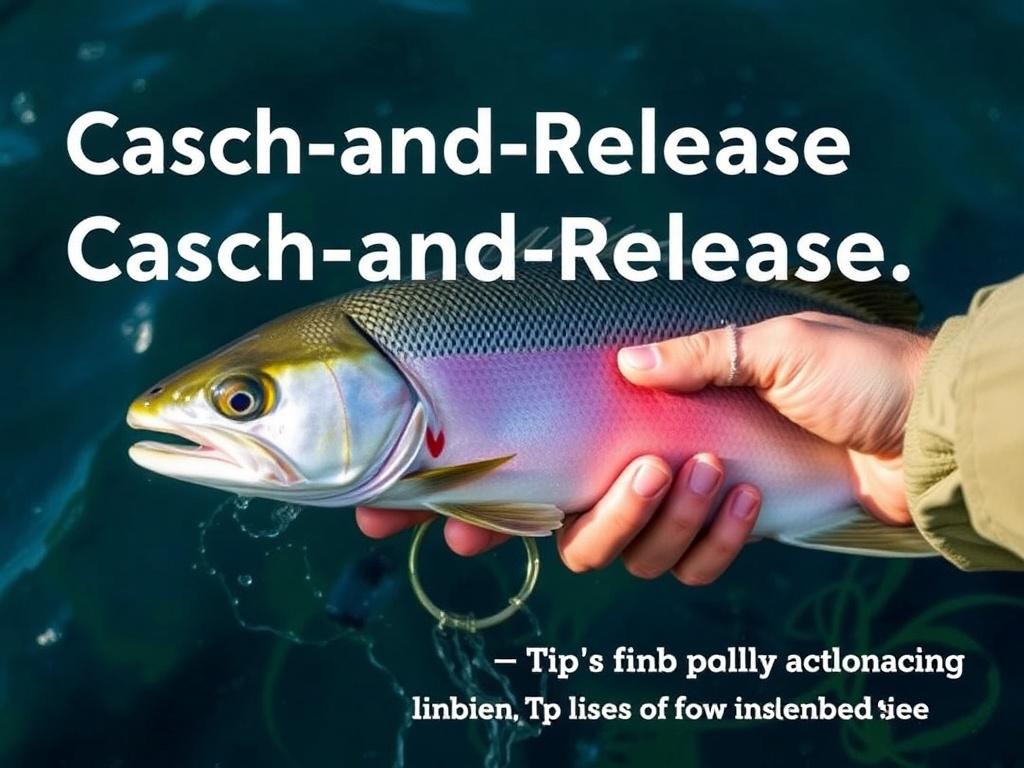
Anglers can be invaluable partners for conservation and science. By recording catches, participating in tagging programs, or reporting invasive species, you contribute data that managers use to set regulations, monitor population trends, and fight disease or invasive spread. Ethical catch and release and accurate reporting go hand in hand: when fish are handled well, data collected are more representative and useful.
Many organizations provide training and easy ways to report data via apps or online portals. Consider joining a local angling club or conservation group to learn best practices and contribute to monitoring efforts in your area.
When Catch and Release Isn’t Appropriate
There are times when catch and release is not the best choice. Here are some circumstances where retention or avoidance may be preferable:
- When catching invasive species that should be removed.
- When fish are legally required to be harvested or kept for management reasons.
- When the fish is fatally injured or bleeding heavily from gill or body wounds—humane dispatch may be preferable.
- When water temperatures and conditions make survival unlikely despite best efforts.
- When regulations prohibit release of certain sizes or species.
Ethical angling sometimes means making hard choices about when to harvest or forgo release to prevent suffering and conserve populations.
How to Improve Your Skills and Teach Others
Skills come from practice. Spend time learning knot-tying, practicing quick hook removal on decommissioned gear, and attending clinics or workshops. Teaching others—friends, youth anglers, or guides—helps spread ethical practices. When teaching, emphasize the “why” behind each action so people understand the conservation and welfare reasons, not just the technique.
Practical exercises
- Practice unhooking on cork or rubber models to build confidence.
- Simulate a quick photo routine to keep out-of-water time short.
- Organize a “gear clean” session with friends to learn decontamination steps.
- Volunteer in a local tagging or monitoring program to see best practices in action.
Ethics Beyond the Hook: Habitat and Community
Catch and release is part of a broader ethic that includes habitat protection, respectful behavior toward other anglers and landowners, and minimizing pollution. Leave no trace: pack out trash, respect private property, and avoid disturbing nesting waterbirds or other wildlife when accessing fishing spots. Your behavior off the water supports fish health and the social license anglers need to access waters and influence policy.
Summary: The Practical Ethic of Catch and Release
Catch and release is a powerful tool for conservation when practiced with care. It requires knowledge, preparation, a sense of responsibility, and sometimes hard judgment calls. Use appropriate gear to reduce fight times; handle fish with wet hands and support their bodies; avoid harmful practices like removing deeply embedded hooks manually; and use revival techniques when needed. Follow local regulations and be prepared to change your behavior depending on temperature, species, and condition of the fish. Above all, treat fish and water with respect—your actions matter.
Short, practical recap
On any fishing trip, prioritize quick, low-damage landings, efficient hook removal, short air exposure, and careful revival. Keep the right tools handy and know when to cut your losses and cut the line. Share what you learn and help build a culture of compassionate angling.
Resources and Further Reading
To continue learning, look for resources from local fisheries departments, angler conservation organizations, and university extension services. Many provide up-to-date, region-specific recommendations on handling, temperature advisories, and invasive species protocols. Participating in local angling clinics is one of the fastest ways to gain hands-on experience and confidence.
This guide aimed to be practical and humane, offering clear steps you can use on your next outing. Catch and release done well preserves the joy of fishing for years to come and helps maintain healthy, vibrant waterways. Thanks for caring enough to learn.
Final checklist to print and take with you
- License, local regs, and emergency contacts
- Barbless hooks and/or crimping tool
- Long-nose pliers, dehooker, line cutters
- Soft rubber net and wet towel
- Measuring board or tape
- Camera with quick settings or waterproof phone
- Knowledge of revival techniques
- Cleaning supplies for gear and boat
- Plan for invasive species handling or reporting
Go out, enjoy the water, and practice catch and release in a way that honors the fish, the habitat, and the future of the sport. Happy fishing—and happy releasing.

